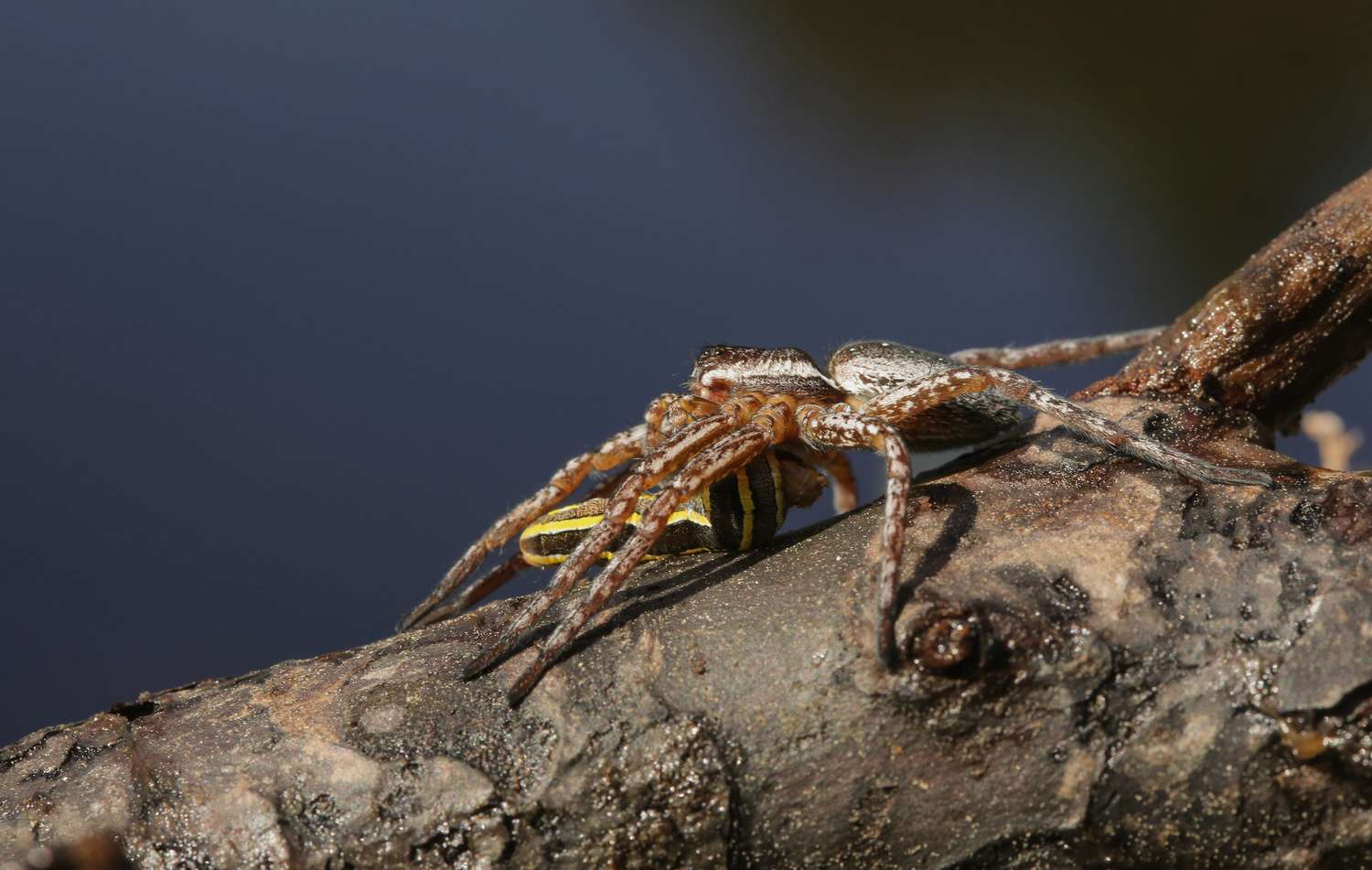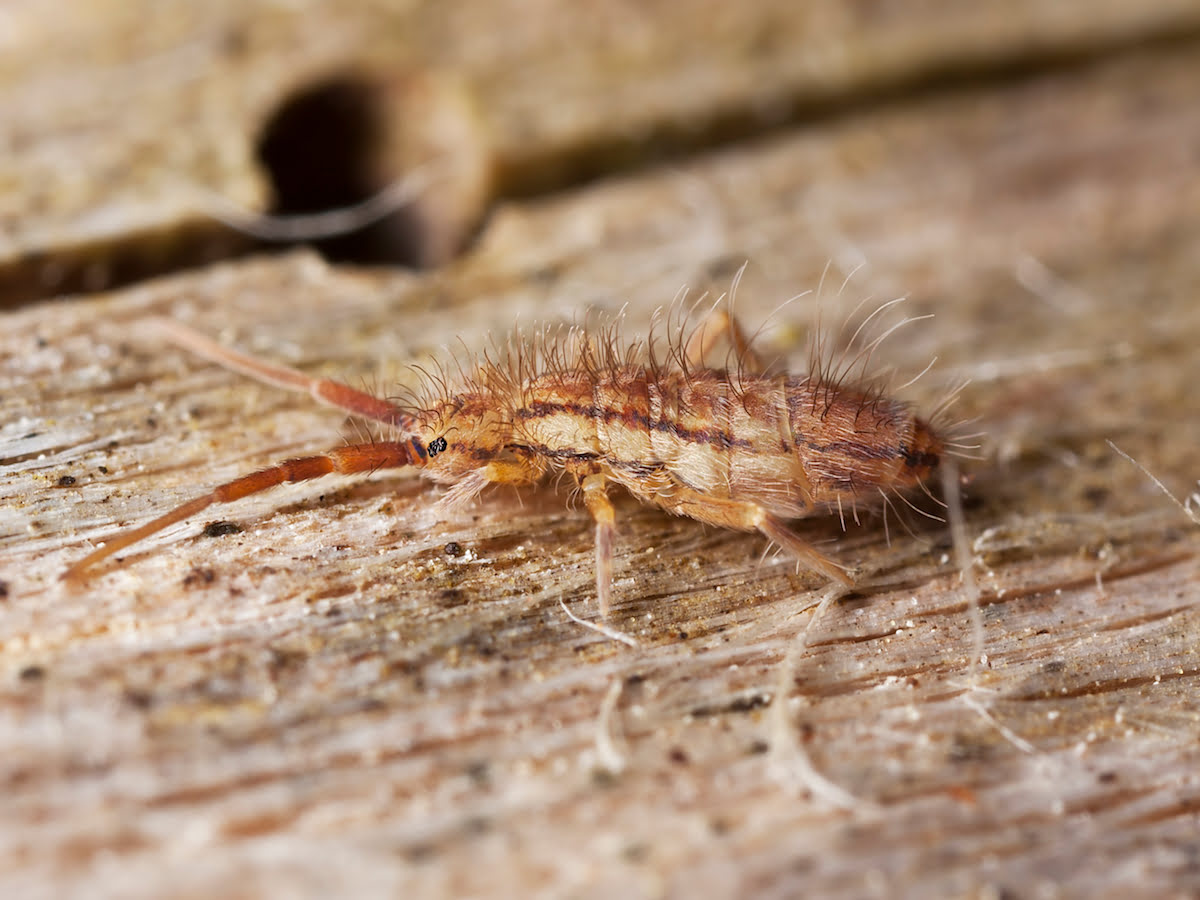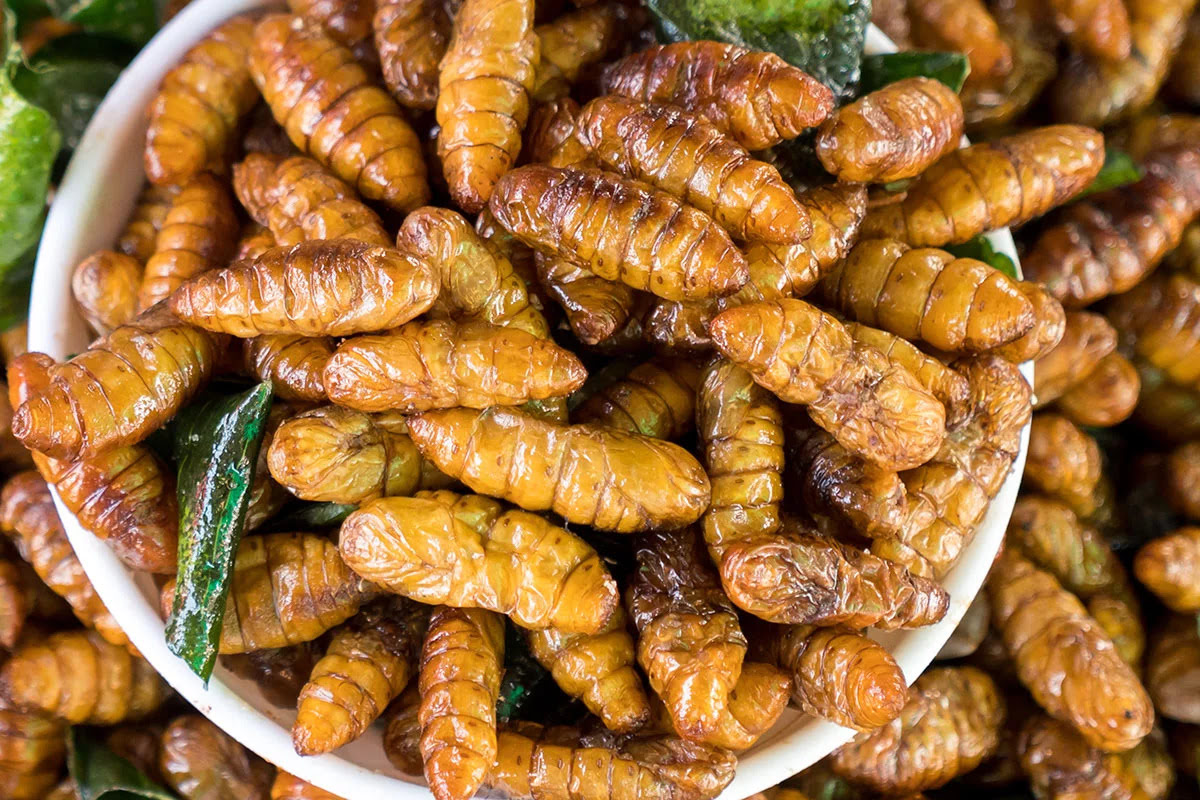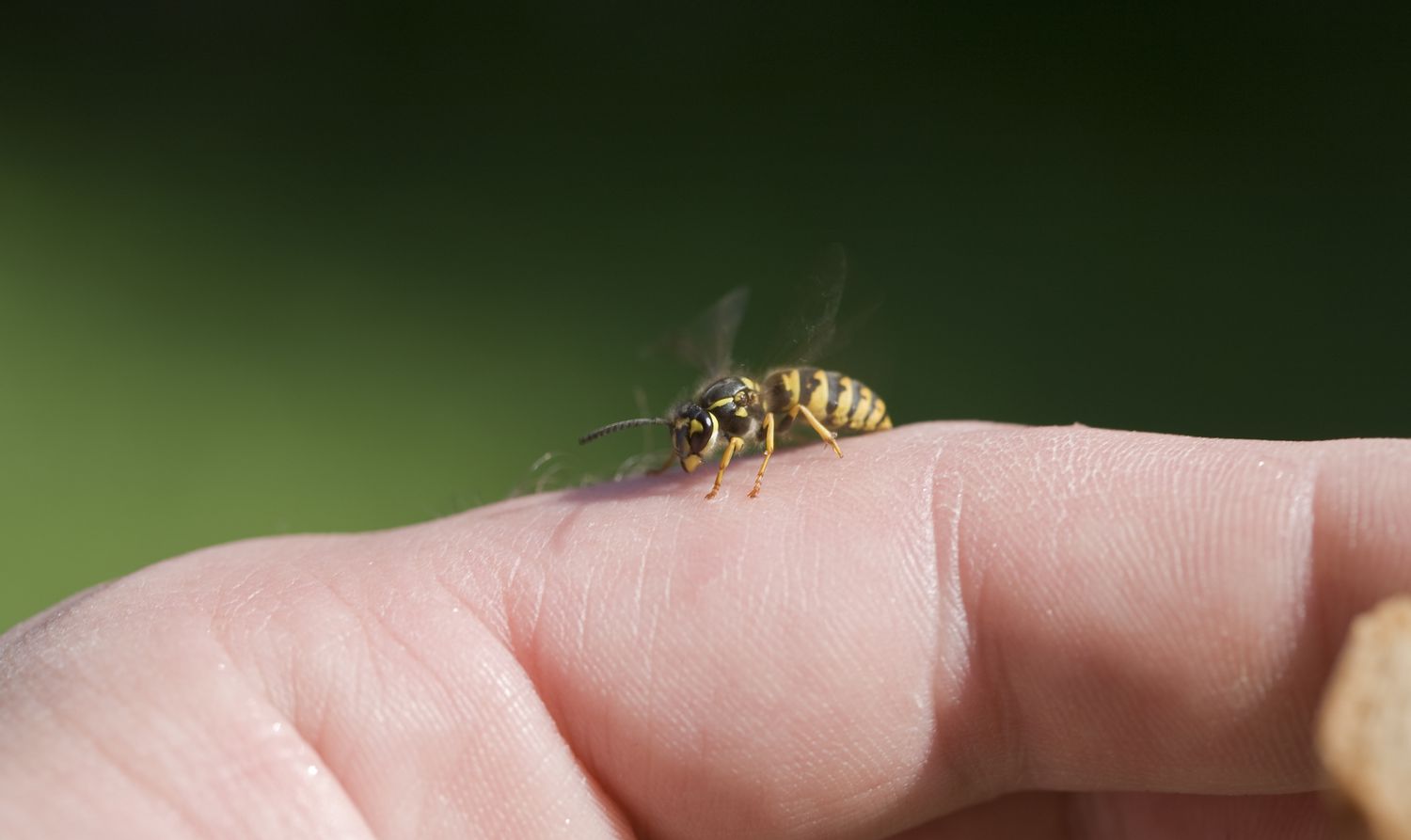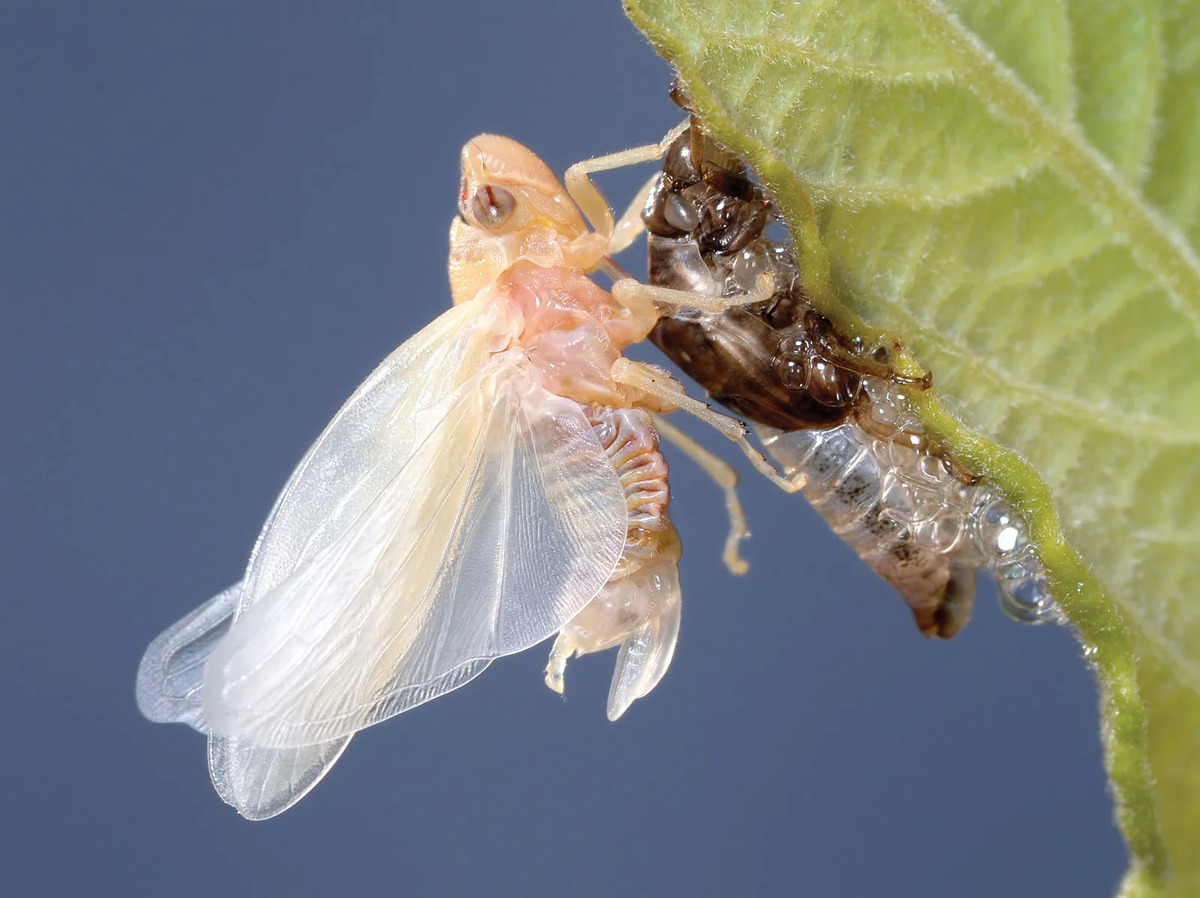Home>Gardening News and Trends>Latest News>What Are Insects For Class 1


Latest News
What Are Insects For Class 1
Modified: January 22, 2024
Discover the latest news and information on insects for Class 1 students. Gain a comprehensive understanding of these fascinating creatures and their importance in our ecosystem.
(Many of the links in this article redirect to a specific reviewed product. Your purchase of these products through affiliate links helps to generate commission for Chicagolandgardening.com, at no extra cost. Learn more)
Table of Contents
Introduction
Welcome to the fascinating world of insects! These small creatures play a vital role in our ecosystem and have captured the curiosity of humans for centuries. From beautiful butterflies fluttering in the garden to industrious ants building intricate colonies, insects are incredibly diverse and have adapted to survive in a wide range of environments.
Insects are one of the most diverse groups of animals on Earth, with over a million known species and countless more yet to be discovered. They are found in almost every habitat, from the icy cold regions of the Arctic to the blistering heat of deserts, and even in our own backyards.
Throughout history, insects have captivated our imagination with their incredible behaviors and unique adaptations. Whether it’s the delicate wings of a dragonfly, the dazzling colors of a ladybug, or the intricate nest constructions of termites, insects never fail to amaze us.
In this article, we will delve into the world of insects, exploring their characteristics, types, life cycle, and the significance they hold in our ecosystem. Get ready to embark on a journey that will open your eyes to the wonders of these tiny creatures and deepen your appreciation for the intricate web of life.
So, let’s dive in and discover the awe-inspiring world of insects!
What are Insects?
Insects are a diverse group of invertebrate animals that belong to the class Insecta. They are characterized by a segmented body, six jointed legs, and typically, a pair of antennae. Insects are the most abundant and successful group of animals on Earth, with more species than any other class of animals.
One of the defining features of insects is their exoskeleton, a hard external covering that provides support and protection for their body. This exoskeleton is made of a substance called chitin, which is both lightweight and durable.
Insects play a crucial role in our ecosystem, as they occupy various niches and interact with plants, other animals, and even humans in different ways. They can be found in a wide range of habitats, including forests, grasslands, wetlands, and even in our homes.
While we often think of insects as small creatures, they come in a variety of sizes. From tiny aphids measuring just a few millimeters in length to enormous beetles that can grow several inches long, the size of insects can vary greatly.
Additionally, insects have a remarkable ability to adapt to their environment. They have evolved various physical and behavioral adaptations that allow them to survive and thrive in different conditions. Some insects have developed camouflage to blend in with their surroundings, while others have evolved powerful wings that enable them to fly swiftly.
Insects are also incredibly diverse in terms of their feeding habits. Some are herbivorous, feeding on plants and plant products, while others are carnivorous, preying on other insects or even small animals. There are also insects that are detritivores, consuming decaying organic matter, and parasites that depend on a host organism for survival.
Overall, insects are a fascinating group of animals that play a vital role in our world. Their diverse adaptations, behaviors, and interactions with the environment make them a subject of intrigue and study for scientists and nature enthusiasts alike.
Characteristics of Insects
Insects possess a unique set of characteristics that distinguish them from other animals. These traits have enabled them to become one of the most successful groups of organisms on our planet. Let’s take a closer look at some of the key features that define insects:
1. Segmented Body: Insects have three distinct body segments – the head, thorax, and abdomen. This segmentation allows for flexibility and specialization of different body parts.
2. Exoskeleton: As mentioned earlier, insects have an external exoskeleton made of chitin. This rigid structure provides support and protection, allowing them to survive in various environments.
3. Six Legs: All insects have six jointed legs attached to the thorax. These legs enable insects to move efficiently and perform a variety of tasks like walking, running, climbing, and jumping.
4. Wings: Many insects have one or two pairs of wings. These wings are typically thin, membranous structures supported by a network of veins. Wings allow insects to fly, providing them with the ability to access different resources and escape from predators.
5. Antennae: Insects have a pair of antennae attached to their head. These sensory organs play a vital role in detecting chemical cues, sensing vibrations, and aiding in navigation.
6. Metamorphosis: The life cycle of most insects involves a process called metamorphosis. This means they undergo distinct physical transformations as they progress from egg to larva to pupa and finally to the adult stage.
7. Antennae Sensory Organs Antennae are sensory organs with various functions. They help insects detect pheromones, locate food sources, communicate with others of their species, and navigate their environment.
8. Specialized Mouthparts: Insects have a diverse range of mouthparts adapted for different feeding habits. Some have chewing mouthparts for consuming plant matter, while others have piercing-sucking mouthparts to extract fluids from plants or prey on other insects.
9. Compound Eyes: Most insects have compound eyes composed of numerous tiny lenses, allowing them to see a wide field of view. This type of vision helps insects spot prey, navigate, and recognize mates.
10. Adaptability: Insects are highly adaptable and can survive in various habitats, climates, and ecological niches. Their ability to adapt quickly to changing conditions has contributed to their success as a class of animals.
These unique characteristics make insects a remarkable group of creatures that have thrived on Earth for millions of years. Understanding their distinctive traits allows us to appreciate their diversity and appreciate their critical role in maintaining the balance of ecosystems.
Types of Insects
The world of insects is incredibly diverse, with over a million known species and countless more waiting to be discovered. These amazing creatures come in a wide range of shapes, sizes, colors, and adaptations. Here are just a few examples of the different types of insects:
1. Beetles: Beetles make up the largest group of insects, with over 400,000 known species. They are characterized by their hard exoskeleton, elytra (forewings), and chewing mouthparts. Beetles can be found in almost every habitat on Earth and come in various sizes and colors.
2. Butterflies and Moths: Butterflies and moths belong to the order Lepidoptera. They are known for their delicate wings covered in tiny scales. These insects undergo a complete metamorphosis, starting as caterpillars and transforming into beautiful adults capable of flight.
3. Ants: Ants are social insects that live in highly organized colonies. They are known for their division of labor, with different individuals performing specific tasks such as gathering food, caring for young, and defending the colony. Ants have a diverse range of species and play crucial roles in many ecosystems as scavengers and predators.
4. Bees: Bees are known for their important role as pollinators. They collect nectar and pollen from flowers, aiding in the reproduction of flowering plants. Bees are highly social insects, living in colonies and communicating through complex waggle dances.
5. Dragonflies and Damselflies: Dragonflies and damselflies belong to the order Odonata. They are characterized by their long, slender bodies, large compound eyes, and powerful wings. These insects are skilled hunters, capturing prey in mid-air with their strong jaws.
6. Grasshoppers and Crickets: Grasshoppers and crickets belong to the order Orthoptera. They are known for their ability to produce sound by rubbing their wings or legs together, a behavior known as stridulation. These insects have powerful hind legs adapted for jumping.
7. Flies: Flies belong to the order Diptera and are characterized by having only two wings. They are incredibly diverse and include various species such as houseflies, fruit flies, and mosquitoes. Flies have mouthparts adapted for sucking or lapping up liquids.
8. Termites: Termites are social insects that live in large colonies and are known for their ability to break down wood. They play crucial roles in nutrient recycling and decomposition in ecosystems. Termites have soft bodies and straight antennae.
9. Aphids: Aphids are small insects that feed on the sap of plants. They reproduce quickly and can cause significant damage to crops. Many species of aphids have a mutualistic relationship with ants, who protect them in exchange for honeydew, a sweet substance produced by aphids.
10. Walking Sticks: Walking sticks, also known as stick insects, are known for their incredible camouflage. They resemble sticks or branches, allowing them to blend in with their surroundings and avoid detection by predators.
These are just a few examples of the vast array of insect diversity. Each type of insect has its own unique characteristics and adaptations that allow them to thrive in their respective habitats. Exploring the world of insects reveals a fascinating tapestry of life on Earth.
Life Cycle of Insects
The life cycle of insects is a fascinating process that involves a series of distinct stages, each with its own purpose and adaptations. While the details may vary among different species, most insects undergo a common life cycle that includes the following stages:
1. Egg: The life cycle begins with the laying of eggs by adult insects. Eggs can be laid individually or in clusters, depending on the species. They are usually deposited in a location that provides adequate protection and resources for the developing larvae.
2. Larva: After the eggs hatch, the next stage is the larval stage. Larvae are often referred to as caterpillars, grubs, or maggots, depending on the insect group. During this stage, the primary focus is on growth and development. Larvae have specific adaptations, such as specialized mouthparts for feeding and increased mobility to search for food.
3. Pupa: The pupal stage is a period of transformation and metamorphosis. The larva undergoes significant internal changes, leading to the development of adult structures. In this stage, the insect may encase itself in a protective cocoon or pupal case, or it may develop within the soil or leaf litter.
4. Adult: The final stage of the life cycle is the adult stage. Once the transformation is complete, the insect emerges from the pupal case or cocoon as an adult. The adult form of an insect is typically the reproductive and sexually mature stage. It has fully developed wings, specialized mouthparts for feeding (depending on the species), and the ability to reproduce.
It’s important to note that not all insects follow the same life cycle pattern. Some insects undergo incomplete metamorphosis, which involves three stages: egg, nymph, and adult. Nymphs resemble miniature versions of adults but lack wings and reproductive organs. They go through multiple molts, shedding their exoskeleton and growing larger each time until they reach adulthood.
The duration of each stage in the life cycle can vary greatly among different insect species. Some insects complete their life cycle in a matter of weeks, while others may take several months or even years. The timing may also be influenced by environmental factors such as temperature, humidity, and resource availability.
The life cycle of insects is a remarkable process that allows for species survival and population growth. Each stage serves a specific purpose in the insect’s development, ensuring the continuation of their species and the maintenance of ecological balance.
Why are Insects Important?
Insects play a crucial role in maintaining the balance of ecosystems and are essential for the well-being of our planet. Here are several reasons why insects are important:
1. Pollination: Many plant species rely on insects for pollination, transferring pollen from male to female flower parts. This process enables the production of fruits, seeds, and the reproduction of flowering plants. Without insect pollinators like bees, butterflies, and moths, our food supply and natural habitats would be severely impacted.
2. Decomposition and Nutrient Cycling: Insects are important decomposers, breaking down dead organic matter and recycling nutrients back into the ecosystem. Termites, beetles, and flies are just a few examples of insects that contribute to the decomposition process. They help to release nutrients, improve soil fertility, and ensure the health of plant life.
3. Pest Control: Many insects are natural predators of pests that can damage crops and gardens. Ladybugs, lacewings, and praying mantises feed on harmful insects like aphids and caterpillars, helping to keep their populations in check. By acting as natural pest controllers, insects reduce the need for chemical pesticides in agriculture.
4. Food Source: Insects serve as a valuable food source for many other animals. They form a significant part of the diet for birds, bats, reptiles, amphibians, and even some mammals. Insects provide a crucial link in the food chain, supporting the survival and diversity of higher-level predators.
5. Nutritional Value for Humans: In many cultures, certain insect species are consumed as a source of protein and essential nutrients. Edible insects such as crickets, mealworms, and grasshoppers offer a sustainable and environmentally friendly alternative to traditional livestock farming, with lower greenhouse gas emissions and reduced land and water requirements.
6. Scientific Research: Insects have served as valuable subjects of scientific research for decades. They have provided insights into important biological processes, genetics, behavior, and evolution. Studying insects helps us understand fundamental aspects of life on Earth and contributes to advancements in medicine, technology, and agriculture.
7. Indicator Species: Insects can act as indicators of ecosystem health and environmental changes. The presence or absence of certain insect populations can reflect the status of an ecosystem and help identify environmental issues like pollution, habitat loss, or climate change.
8. Aesthetics and Education: Insects contribute to the natural beauty of our surroundings, with their vibrant colors, intricate patterns, and interesting behaviors. They provide inspiration for art, photography, and storytelling. Additionally, learning about insects and their diversity can cultivate a sense of wonder and appreciation for the natural world.
Insects are not just small and insignificant creatures; they are integral components of our ecosystems and have a profound impact on the functioning of our planet. Recognizing their importance is crucial for promoting their conservation, preserving biodiversity, and maintaining a healthy and sustainable environment for future generations.
Fun Facts about Insects
Insects are fascinating creatures that never cease to amaze us. From their incredible adaptations to their unique behaviors, here are some fun facts about insects that will leave you in awe:
1. Largest Insect: The title for the largest insect in the world goes to the Giant Weta. Found in New Zealand, these massive insects can measure up to 4 inches (10 centimeters) long and weigh more than a sparrow!
2. Most Numerous Animal: Insects are the most numerous animals on Earth. It is estimated that there are around 10 quintillion (10,000,000,000,000,000,000) individual insects alive at any given time. That’s a lot of bugs!
3. Flying Backwards: While birds can fly forward and backward, insects are the only group of animals that can fly backward. Certain insects, such as hummingbirds hawkmoths, have the ability to fly in reverse by rapidly flapping their wings.
4. Longest Migration: The Monarch butterfly holds the record for the longest migration of any insect. Every year, millions of Monarchs travel up to 3,000 miles (4,800 kilometers) from Canada and the United States to Mexico to escape the cold weather.
5. Strongest Insect: The Goliath beetle, native to Africa, holds the title for the strongest insect. Despite its large size, it can carry up to 850 times its own body weight. That’s like an average person lifting about 65 tons!
6. Lifespan Variations: Insects have incredibly diverse lifespans. Some may live for just a few days or weeks, like the adult mayflies, while others, like certain species of cicadas, can live for up to 17 years underground before emerging as adults.
7. Precious Silk: Silk, one of the most valuable fabrics, is produced by silkworms. The caterpillars of silk moths spin silk fibers to create their cocoons. It takes around 2,000 to 3,000 cocoons to produce just one pound of silk!
8. Ancient Insects: Insects have been around for a very long time. Fossil evidence suggests that insects existed more than 400 million years ago, making them older than dinosaurs!
9. Firefly Light Show: Fireflies put on a mesmerizing light show with their bioluminescence. The light is produced by a chemical reaction in their bodies, and each species has a unique pattern and timing of flashes to attract mates.
10. Ecological Architects: Some species of termites build towering mounds that can reach several meters high. These mounds serve as complex colonies with chambers for nurseries, food storage, and temperature regulation.
11. Hibernation Experts: The Arctic woolly bear caterpillar has a remarkable adaptation to survive extreme cold temperatures. It freezes solid during winter and thaws out again in warmer seasons, resuming its growth and development.
These fun facts about insects highlight the incredible diversity, abilities, and behaviors found in the insect world. From their extraordinary migrations to their impressive physical feats, insects continue to surprise and delight us with their remarkable traits and adaptations.
Conclusion
Insects, with their vast numbers, incredible adaptability, and diverse characteristics, are an integral part of our world. They play crucial roles in our ecosystems, from pollination and decomposition to pest control and nutrient cycling. Insects are not only essential for the balance of nature but also provide valuable resources and inspire scientific discoveries.
Understanding the importance of insects helps us appreciate their remarkable diversity and the intricacies of their life cycles. From the smallest aphid to the largest beetle, each insect has its own unique adaptations and behaviors that contribute to the web of life. Insects serve as indicators of environmental health, highlighting the impacts of human activities on ecosystems and the need for conservation efforts.
Moreover, insects have captured our fascination and stimulated our curiosity since ancient times. Their vibrant colors, impressive wings, and complex behaviors have inspired art, literature, and scientific research. By exploring the fascinating world of insects, we gain a deeper understanding of the intricacies of nature and our place within it.
It is crucial that we recognize the value of insects and strive to protect and preserve their habitats. Conservation efforts, sustainable agricultural practices, and reducing the use of pesticides are all important steps towards ensuring their survival and the well-being of our planet.
So, the next time you spot a crawling caterpillar, a buzzing bee, or a fluttering butterfly, take a moment to appreciate the wonders of these tiny creatures. They are not just pests or nuisances; they are vital contributors to the delicate balance of our ecosystems and an essential part of the natural world we share.
